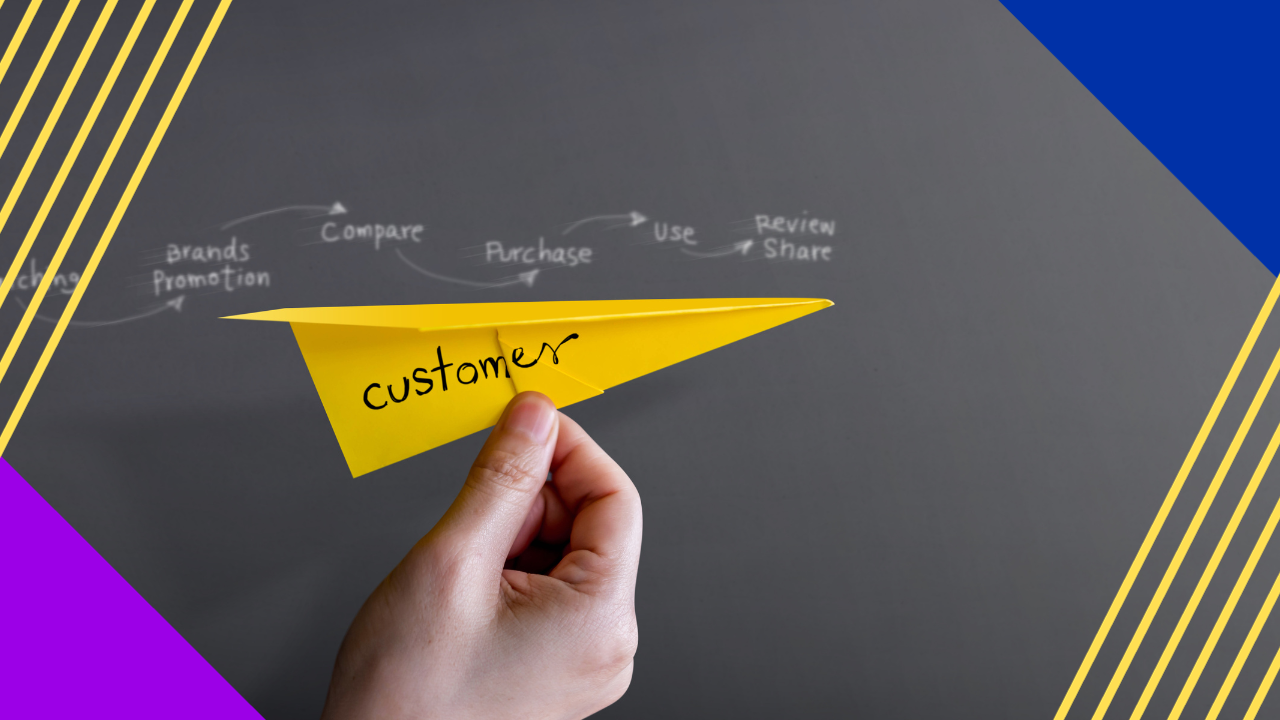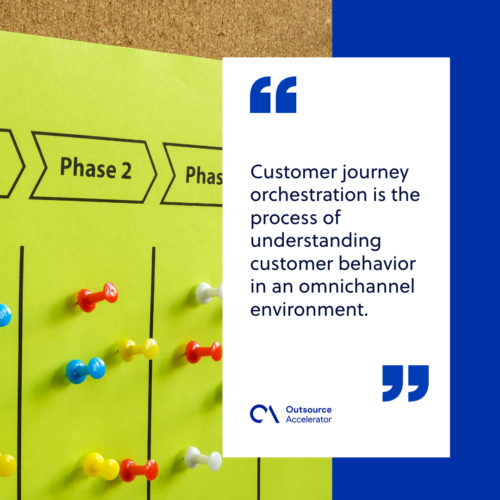Complete guide to customer journey orchestration

Having a personal, ongoing relationship with your customer is one of the most important ways a business can stay afloat.
When customers buy a product or use a service, tracking their experience and knowing if they are truly satisfied can be difficult for businesses.
This is where customer journey orchestration comes in. It helps businesses understand the customers’ point of view and string together their experiences with their brand.
What is customer journey orchestration?
Customer journey orchestration is the process of understanding customer behavior in an omnichannel environment.
Businesses look for patterns and common points in the data gathered through these channels to predict a customer’s next move.
Given this data and after learning about different customer experiences, companies can create personalized campaigns. These efforts increase brand loyalty and encourage customers to keep using their services.

Benefits of customer journey orchestration
Keeping track of every single customer is hard, and having a personal relationship with each one is even harder.
Customer journey orchestration helps with this problem by allowing businesses to get to know their customers without directly interacting with them.
Here are some additional benefits of customer journey orchestration:
Personalized customer experiences
Every customer experience with a product or service is different, so companies do their best to cater to each personal preference.
Since customers use different channels when shopping, your brand needs to be ready to engage with them at any moment.
This is especially true given the rise of online shopping, as e-commerce personalization allows businesses to give customers exactly what they want.
Maintain communication between buyer and seller
Customer journey orchestration opens the door for two-way communication between the buyer and seller to provide the best experience possible.
As mentioned earlier, companies gather data across different platforms, and the customers provide that data.
Even though they are not communicating directly, any information will guide brands in making experiences more personal.
Increased sales and revenue
Businesses that thrive and earn a lot are the ones that have a loyal customer base, and customer journey orchestration helps make that happen.
Personally catered offers lead to a higher conversion rate, increasing sales and retaining customers.

Increases adaptability
Customer journey orchestration helps brands respond to the ever-changing e-commerce industry and its customers in real-time.
As more individuals migrate to online shopping, brands must adapt accordingly to how their customers engage in a digital setting.
The sooner brands can track and respond to their customers’ actions, the better they can adjust their marketing strategies to create personalized experiences.
Steps to creating customer journey orchestration
Customer journey orchestration requires a lot of research and understanding of your customers’ habits.
Here are the main steps to successfully achieve customer journey orchestration:
Step 1: Identify target customers
The key to creating a successful customer journey orchestration is getting to know your customers. Learn their goals, pain points, and reasons for buying your product or service.
Knowing who your target customers are will help you provide experiences that are specifically tailored to their needs.
Step 2: Create omnichannel campaigns
Omnichannel commerce allows brands to reach their target audience at any time.
It creates a seamless experience that gives customers access to your channels whenever they need it, driving more traffic and sales to your brand.
Having your brand be readily accessible and providing the same quality of service to customers increases engagement, especially if it is convenient for them.
Step 3: Data collection
You will need the necessary data and information to fuel your customer journey orchestration. There are several sources which you can get data from, such as:
- Customer attributes
- Website analytics
- Social media
- Product reviews
- Customer feedback
- Transactions (purchases, returns, etc.)
- Customer service
Step 4: Data analysis and testing
Once you have acquired all the necessary data, you can use analytics tools or customer data platforms to help organize all of it and look for patterns.
You can also segment your data according to similar characteristics. Apply your results and test them on your different channels.
This step may require some trial and error and re-analyzing, but it will help you develop the most appropriate measures to help you understand what each customer needs.
Step 5: Repeat
After creating a unique customer experience, the process repeats for other products and services.
From understanding your customers to data gathering and analysis, each one will be satisfied with your brand’s experience as it resonates with them.
Stand out as a brand with customer journey orchestration
With competition getting tighter and more brands vying for your customers, creating individualized experiences is all the more important.

Each customer is different and has specific needs, and it is the brand’s responsibility to cater to each one individually.
Successfully implementing customer journey orchestration keeps your buyers happy, puts you ahead of your competitors, and brings much-needed traffic and sales to your business.







 Independent
Independent




